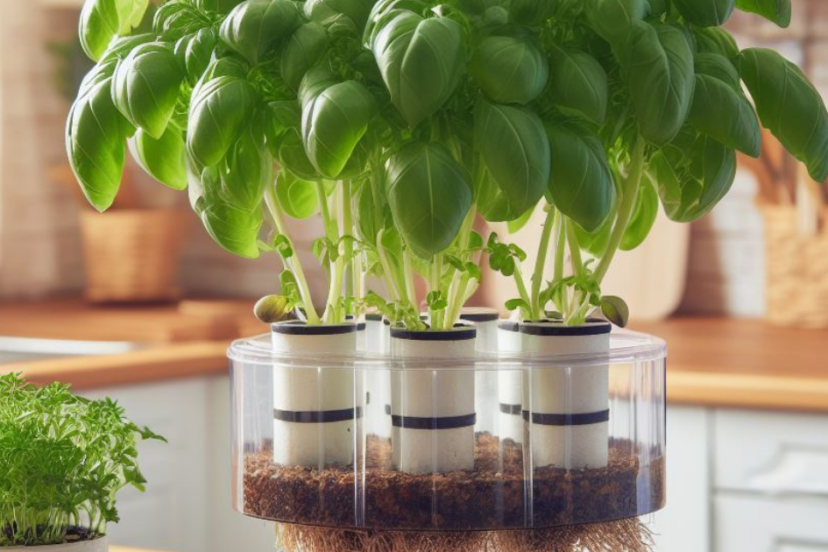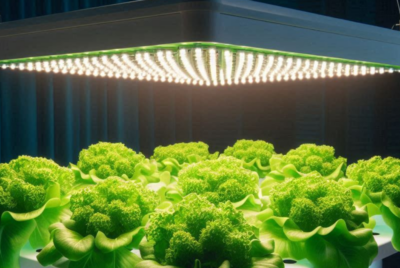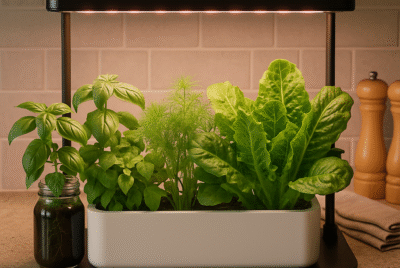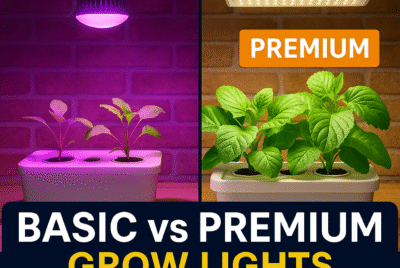DWC Hydroponics: A Fresh Beginning
Welcome to the captivating world of DWC hydroponics, a revolutionary way to nurture plants without soil. If you’re curious about the incredible benefits and exciting possibilities this method offers, you’re in the right place.
What Is DWC Hydroponics?
DWC, which stands for Deep Water Culture, is a hydroponic system that immerses plant roots directly into a nutrient-rich water solution. Unlike traditional soil-based gardening, DWC hydroponics relies on a controlled environment where plants receive all their essential nutrients through water.
Benefits of DWC Hydroponics
When it comes to gardening, I’ve always been on the lookout for innovative methods that deliver outstanding results. That’s what led me to discover DWC hydroponics, and the benefits I’ve experienced have been truly remarkable. In this article, I’ll share with you the amazing advantages of Deep Water Culture (DWC) hydroponics.
1. Faster Growth Rates
One of the first benefits I noticed with DWC hydroponics was the astonishing speed at which plants grow. Without the constraints of soil, plants can access nutrients and oxygen directly, leading to rapid growth. I was able to enjoy fresh produce in a fraction of the time it would take in traditional gardening.
2. Higher Yields
The ultimate goal of any gardener is a bountiful harvest, and DWC hydroponics delivers on this front. The controlled environment ensures that plants receive the ideal conditions for growth, resulting in significantly higher yields. It’s satisfying to see your efforts translate into an abundant crop.
3. Space-Efficient
Living in a limited space, I appreciate the compact design of DWC systems. Whether you have a small balcony, a spare room, or a greenhouse, DWC hydroponics can be adapted to fit your space. It’s a game-changer for urban gardeners like me.
4. Water Conservation
Water scarcity is a growing concern, and DWC hydroponics aligns perfectly with the need for responsible water use. This method uses up to 90% less water than traditional soil gardening, making it an eco-friendly choice. I felt good knowing I was conserving a precious resource.
5. No Weeding or Soil Pests
Bid farewell to hours spent weeding and worries about soil-borne diseases and pests. In DWC hydroponics, there’s no soil to harbor these issues. My gardening efforts became more enjoyable and less labor-intensive.
6. Nutrient Control
Controlling nutrient levels is a breeze in DWC systems. You can fine-tune the nutrient solution to meet your plants’ exact needs. This precision ensures robust, healthy growth and minimizes the risk of over-fertilization.
7. Year-Round Gardening
DWC hydroponics offers the flexibility to garden year-round, irrespective of the season. I was able to enjoy fresh herbs, vegetables, and even flowers even in the depths of winter. It’s a fantastic way to maintain a green thumb throughout the year.
8. Sustainability
By reducing the need for soil and making efficient use of resources, DWC hydroponics is a sustainable gardening method. It aligns with eco-conscious values, which is important to many of us today.
In my journey with DWC hydroponics, I’ve witnessed these benefits firsthand, and they’ve transformed the way I approach gardening. If you’re looking for a method that combines efficiency, sustainability, and higher yields, DWC hydroponics might be the perfect fit for your gardening aspirations.
The journey doesn’t end here. In our next installment, we’ll dive into the steps of setting up your very own DWC hydroponics system. Stay tuned for more exciting insights and tips!
Getting Started: Setting up a DWC Hydroponics System
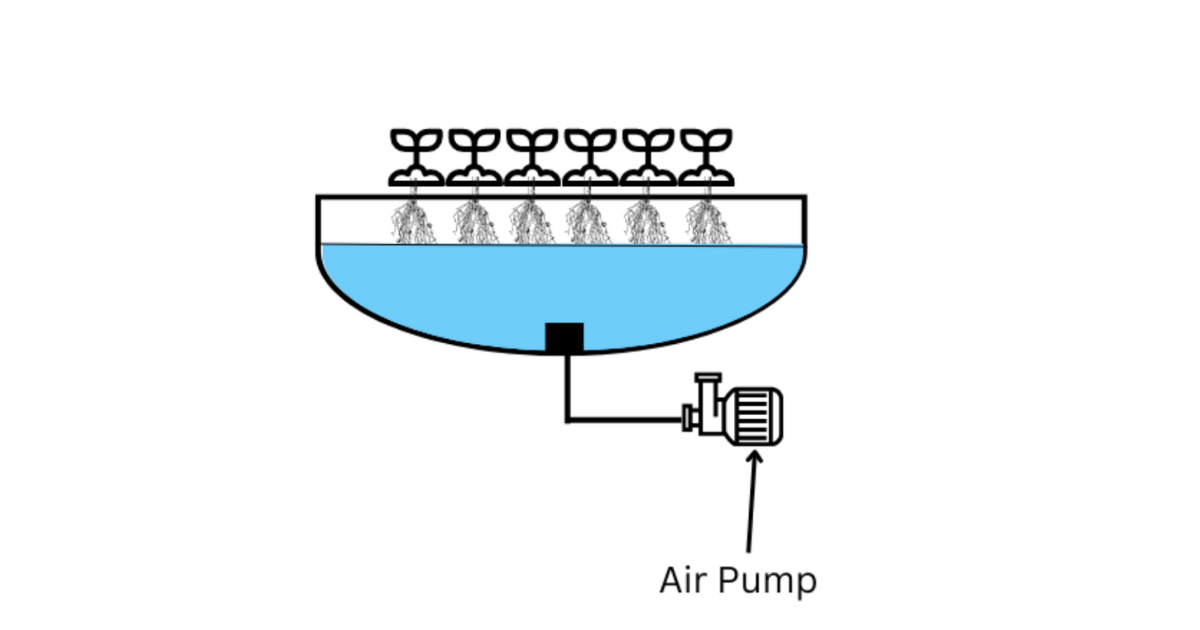
I remember the excitement when I first ventured into DWC hydroponics. The thought of growing plants without soil was intriguing, and the journey began with setting up my DWC system. In this article, I’ll guide you through the steps of creating your very own Deep Water Culture (DWC) hydroponics system.
1. Selecting the Right Container
The foundation of your DWC hydroponics system is the container. It should be watertight, lightproof, and able to hold the plant’s roots in the water. Many gardeners opt for plastic buckets or totes, which are readily available and affordable.
2. Air Pump and Air Stones
To provide oxygen to your plant’s roots, you’ll need an air pump and air stones. These components ensure that the water remains oxygenated, which is crucial for plant growth. Simply connect the air stones to the air pump and place them in the container.
3. Nutrient Reservoir
Your nutrient reservoir is where you’ll mix the nutrient solution that will nourish your plants. Select a container that is lightproof to prevent algae growth. You’ll connect this container to the air pump to keep the nutrient solution well-aerated.
4. Hydroponic Growing Medium
DWC systems use a growing medium to support the plant and hold it in place. Common options include clay pellets, Rockwool, or even simple net pots filled with hydroton. Ensure that the medium you choose is inert and won’t affect the nutrient solution’s pH.
5. Monitoring and Control
Maintaining the right nutrient balance is essential in DWC hydroponics. Invest in a pH meter and an electrical conductivity (EC) meter to regularly check and adjust the pH and nutrient levels. Consistency is key to healthy plant growth.
6. Light Source
Plants need light to grow, so you’ll need a suitable light source. LED grow lights or fluorescent lights work well for DWC systems. Ensure that the light provides the right spectrum for the growth phase of your plants.
7. Plant Selection
Choose the plants you want to grow in your DWC system wisely. While many plants thrive in hydroponic environments, some are better suited than others. Leafy greens, herbs, and some vegetables are popular choices.
8. Planting and Maintenance
Plant your seedlings or cuttings into your chosen growing medium and place them in the DWC system. Regularly check the water level, pH, and nutrient concentration to maintain optimal growing conditions. It’s a good idea to keep a grow journal to track your progress.
9. Lighting Schedule
Set a consistent lighting schedule for your plants, ensuring they receive the right amount of light each day. Most plants require 12 to 16 hours of light daily, depending on their growth stage.
Setting up a DWC hydroponics system may seem complex at first, but with careful planning and attention to detail, it’s a rewarding endeavor. As I’ve discovered, the benefits of DWC hydroponics make the effort worthwhile.
Choosing the Right Plants for DWC Hydroponics 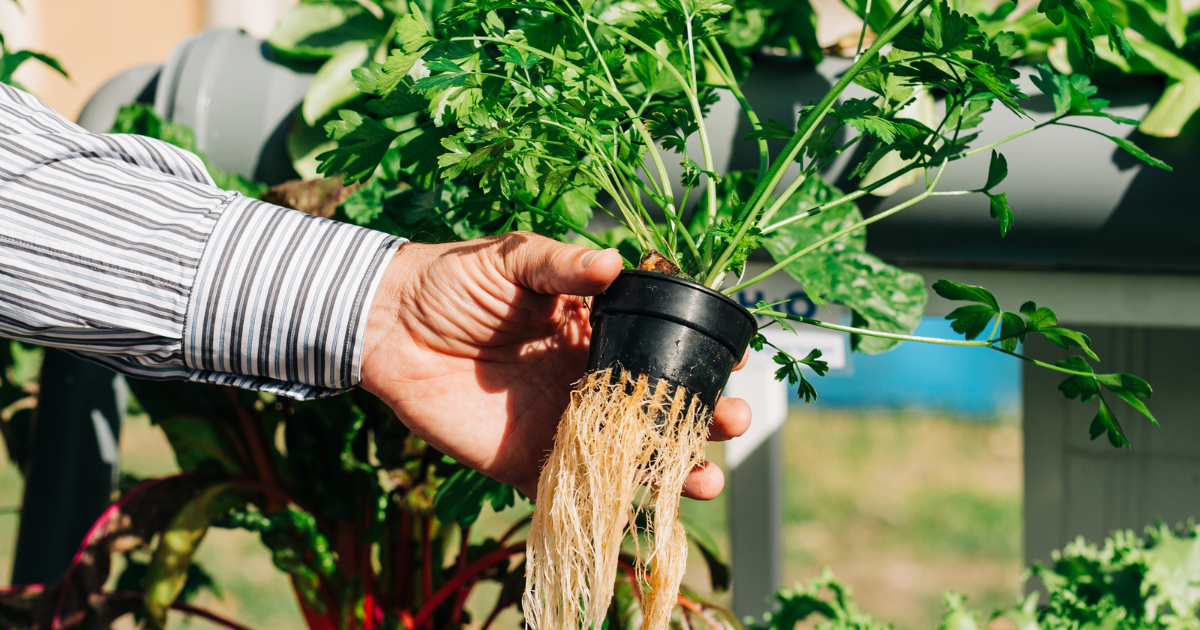
In my DWC hydroponics journey, one of the most exciting decisions was selecting the plants to nurture in this soilless wonderland. Let’s dive into the fascinating world of choosing the right plants for your Deep Water Culture (DWC) hydroponics system.
1. Leafy Greens
Leafy greens are some of the easiest and most rewarding choices for DWC hydroponics. Varieties like lettuce, spinach, and kale thrive in the well-oxygenated nutrient solution. Their rapid growth and vibrant leaves make them an excellent starting point for beginners.
2. Herbs
Growing herbs in DWC systems is not only practical but also aromatic. Basil, cilantro, mint, and parsley are some of the favorites among hydroponic gardeners. You’ll have a fresh supply of flavorful herbs right at your fingertips.
3. Tomatoes
Tomatoes are a popular choice for DWC hydroponics due to their prolific fruit production. Choose determinate tomato varieties as they tend to be more compact and manageable. With the right care, you’ll enjoy a bountiful tomato harvest.
4. Peppers
Bell peppers, chili peppers, and sweet peppers can all thrive in a DWC system. They require minimal space and are a fantastic addition for those who love a touch of heat in their cooking.
5. Cucumbers
Cucumbers may need a bit more space due to their vining nature, but they are well-suited to DWC hydroponics. Enjoy a steady supply of crisp cucumbers with consistent care.
6. Strawberries
For a sweet and juicy treat, consider growing strawberries in your hydroponic setup. These delightful berries thrive in a soilless environment, and the taste of homegrown strawberries is unmatched.
7. Spinach and Swiss Chard
If you’re a fan of nutrient-rich greens, don’t overlook spinach and Swiss chard. They’re easy to grow in DWC systems and are packed with vitamins and minerals.
8. Zucchini
Zucchini is another option for adventurous hydroponic gardeners. The sprawling nature of zucchini plants can be managed with the right trellis system, and the rewards are succulent zucchinis for your kitchen.
9. Radishes
If you’re looking for a quick-growing option, radishes are a great choice. They mature rapidly and are a perfect addition to salads.
10. Microgreens
Microgreens are a delightful addition to any DWC system. These tiny powerhouses of nutrition can be harvested in as little as two weeks, providing a continuous source of fresh greens.
When choosing plants for your DWC hydroponics system, consider factors such as available space, light conditions, and your personal preferences. Remember to start with varieties that suit your experience level, and as you gain confidence, you can experiment with more challenging plants.
With the right choices, you’ll experience the joy of growing your favorite produce efficiently and sustainably.
Maintaining Nutrient Levels in My DWC System
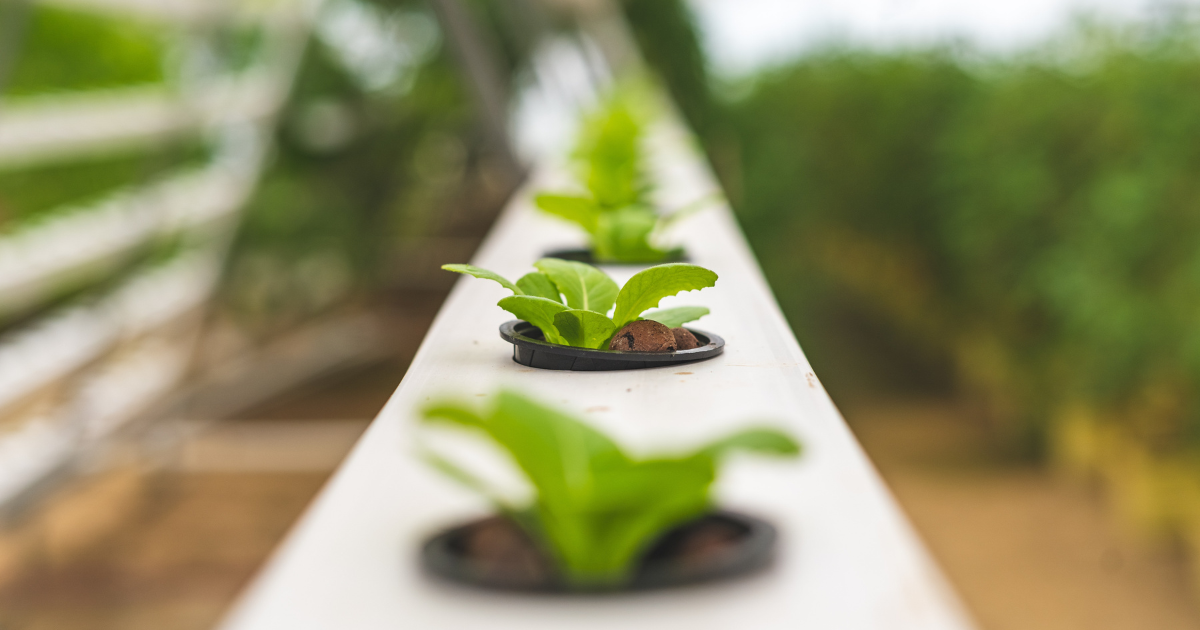
As I ventured further into my DWC hydroponics journey, I realized that the secret to thriving plants lay in the precise management of nutrient levels. In this article, I’ll share my experiences and insights on maintaining nutrient levels in Deep Water Culture (DWC) systems.
1. Nutrient Solution Basics
The nutrient solution in your DWC system is the lifeblood of your plants. It contains all the essential elements plants need for growth, including nitrogen, phosphorus, potassium, and micronutrients. As the gardener, it’s your responsibility to ensure that this solution is well-balanced and consistent.
2. Monitoring pH Levels
Maintaining the correct pH level is critical. Most plants thrive in slightly acidic conditions, with a pH range between 5.5 to 6.5. Regularly check the pH level using a pH meter and adjust it using pH up or down solutions as needed. An imbalanced pH can hinder nutrient uptake and lead to stunted growth.
3. Checking Electrical Conductivity (EC)
The EC of your nutrient solution measures the concentration of dissolved salts, including the nutrients your plants need. It’s important to monitor EC levels to ensure that the nutrient solution is within the appropriate range for your plant’s growth stage. Too high or too low EC can stress your plants.
4. Oxygenation and Aeration
Oxygen is essential for the root system of your plants. An air pump and air stones create bubbles in the nutrient solution, providing oxygen directly to the roots. Well-oxygenated water enhances nutrient absorption and prevents root rot.
5. Maintaining Nutrient Strength
Regularly replenish the nutrient solution to maintain its strength. As your plants grow, they’ll consume nutrients, and you need to ensure they always have access to a balanced mixture. Complete changes of the nutrient solution may be necessary periodically.
6. Weekly Inspections
It’s a good practice to perform weekly inspections of your DWC system. Check the roots for signs of discoloration, rot, or pest infestations. Inspect the nutrient solution for any unusual changes in color or odor. Early detection of issues can prevent plant damage.
7. Avoid Overfeeding
While nutrient-rich water is crucial, overfeeding your plants can harm them. Excess nutrients can lead to nutrient burn, which results in discolored leaves and decreased growth. Follow the manufacturer’s recommendations for nutrient dosage or seek guidance from experienced hydroponic gardeners.
8. Adjusting for Growth Stages
Different plants have varying nutrient requirements during their growth stages. Seedlings have different needs compared to mature plants. Be prepared to adjust your nutrient solution as your plants grow and develop.
9. Regular Flushing
Periodic flushing of your DWC system is essential to prevent nutrient buildup and salt accumulation. This helps maintain a healthy and balanced nutrient solution for your plants.
Maintaining nutrient levels in a DWC system is both a science and an art. With consistent monitoring, careful adjustments, and a keen eye for your plant’s needs, you’ll soon find that your hydroponic garden is thriving.
Common Mistakes to Avoid in My DWC Hydroponics Journey
As I delved deeper into my DWC hydroponics adventure, I quickly realized that while this method offers remarkable benefits, it also has its share of pitfalls. In this article, I’ll share my firsthand experiences and the common mistakes I’ve learned to avoid in Deep Water Culture (DWC) hydroponics.
1. Neglecting pH and EC Monitoring
One of the most crucial aspects of DWC hydroponics is maintaining the correct pH and Electrical Conductivity (EC) levels. Neglecting these can lead to nutrient imbalances, stunted growth, and nutrient deficiencies. Regular monitoring and adjustments are essential.
2. Inadequate Oxygenation
Oxygen is vital for your plant’s root system, and insufficient aeration can lead to root rot. Ensure that your air pump and air stones are functioning correctly to provide ample oxygen to the roots.
3. Overcrowding Your System
It’s tempting to maximize space, but overcrowding your DWC system can lead to competition for nutrients and limited light penetration. Give your plants room to breathe and grow. Each plant should have ample space to thrive.
4. Poor Lighting
Choosing the wrong type or insufficient lighting can severely hinder plant growth. Be sure to select the appropriate grow lights and maintain a consistent lighting schedule that suits the needs of your plants.
5. Ignoring Plant Nutrient Requirements
Different plants have distinct nutrient requirements at various growth stages. Failing to adjust your nutrient solution can lead to under or overfeeding, causing harm to your plants.
6. Neglecting Regular Inspections
Regular inspections are essential to catch issues early. If you overlook this step, you might miss signs of nutrient deficiencies, root problems, or pest infestations that can quickly spiral out of control.
7. Using Tap Water Without Treatment
Tap water often contains chlorine or chloramine, which can harm your plants. Always treat tap water to remove these chemicals before using it in your DWC system.
8. Inconsistent Temperature Control
Plants are sensitive to temperature changes. DWC systems are best kept in a stable environment to avoid stress on your plants. Avoid extreme temperature fluctuations and ensure a comfortable growing temperature.
9. Inadequate Maintenance of Equipment
Regularly clean and maintain your DWC system equipment, such as air pumps, air stones, and tubing. Neglecting maintenance can lead to equipment failures that can impact plant health.
10. Skipping the Quarantine Stage
If you’re introducing new plants or seedlings to your DWC system, always quarantine them first. This helps prevent the spread of diseases or pests to your entire hydroponic garden.
Learning from these mistakes and avoiding them has been a vital part of my DWC hydroponics journey. By steering clear of these common pitfalls, you can set yourself up for a thriving and successful hydroponic garden.
DWC Hydroponics vs. Other Growing Methods
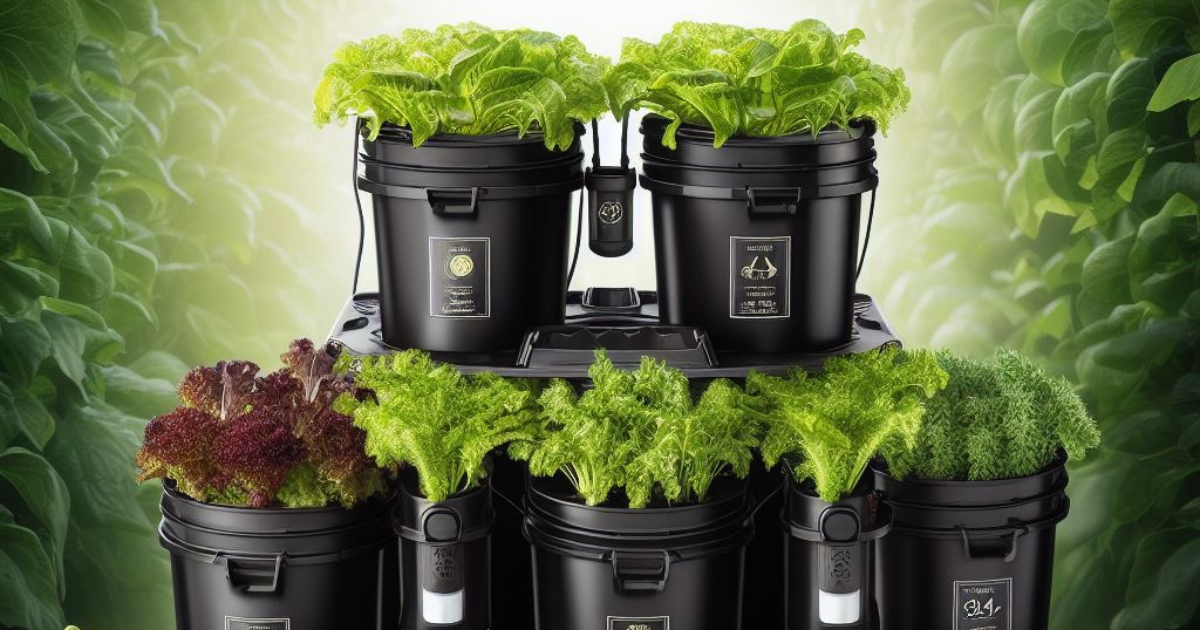
In my journey through hydroponic gardening, I’ve explored various methods, but none have intrigued me as much as Deep Water Culture (DWC) hydroponics. Let’s dive into the key differences between DWC hydroponics and other growing methods to help you make an informed choice for your gardening endeavors.
1. Soil vs. Soil-less
Traditional gardening relies on soil to provide plants with essential nutrients. In contrast, DWC hydroponics is entirely soil-less, with plant roots suspended in a nutrient-rich water solution. This soil-less nature makes DWC cleaner, more controlled, and less prone to soil-borne diseases.
2. Water Usage
DWC hydroponics is a water-efficient method. It uses up to 90% less water than traditional soil gardening because the nutrient solution is recirculated, minimizing water waste. If you’re environmentally conscious, this is a significant advantage.
3. Faster Growth
One of the standout benefits of DWC hydroponics is the rapid growth it promotes. Plants in DWC systems often grow 25-30% faster than those in soil. This means quicker harvests and more frequent crop cycles.
4. Space Efficiency
DWC systems are compact and adaptable. They’re ideal for small spaces, balconies, or indoor gardening. Other hydroponic methods, such as NFT or ebb and flow, might require more space and a different setup.
5. Nutrient Control
In DWC hydroponics, you have precise control over the nutrient solution. You can tailor the nutrient mix to suit your plants’ exact needs. In traditional gardening, nutrient control is limited and may require soil testing and amendments.
6. Root Health
DWC systems provide ample oxygen to the roots, promoting healthier and stronger root systems. Other methods, particularly soil-based gardening, may have issues with compaction and poor aeration that can affect root health.
7. Year-Round Gardening
DWC hydroponics allows you to garden year-round, regardless of the weather outside. This is especially advantageous for those in regions with harsh climates.
8. Pest and Disease Control
With no soil to harbor pests and diseases, DWC hydroponics reduces the risk of infestations. In traditional gardening, you may need to use pesticides or herbicides to protect your plants.
9. Initial Investment
While the initial setup of a DWC hydroponics system might be slightly costlier, the long-term benefits, including water savings and faster growth, can outweigh the initial investment.
10. Learning Curve
Like any gardening method, DWC hydroponics has a learning curve. It may take some time to understand the nuances of maintaining nutrient levels and preventing common issues. Traditional gardening may seem more straightforward to beginners.
In weighing the pros and cons of DWC hydroponics against other growing methods, consider your space, resources, and gardening goals. Each method has its unique advantages, but for me, the faster growth, water efficiency, and freedom from soil-related problems make DWC hydroponics a clear winner. It has transformed my gardening experience and might just do the same for you.
My Guide to Troubleshooting in DWC Hydroponics
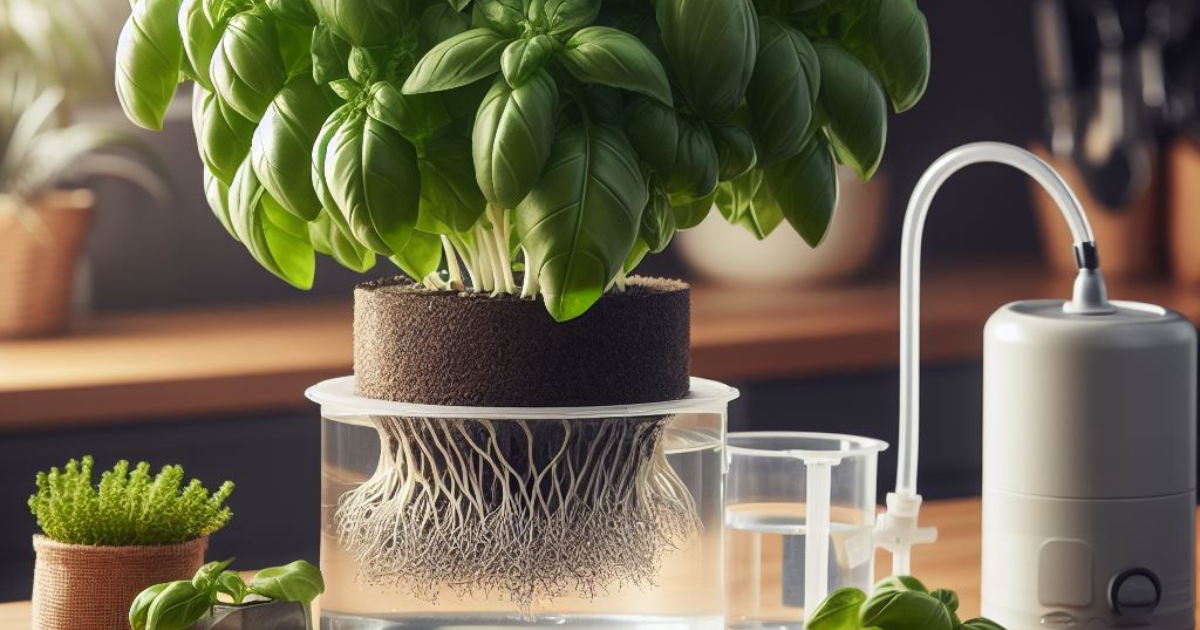
My journey into DWC hydroponics has been nothing short of transformative, but like any gardening endeavor, it hasn’t been without its share of challenges. In this article, I’ll share my experiences and insights on how to troubleshoot common issues that may arise in your DWC hydroponic system. After all, knowing how to navigate hiccups is a valuable skill for any hydroponic gardener.
1. Yellowing Leaves: Nutrient Imbalance
Yellowing leaves are often a sign of nutrient imbalance, a common woe in hydroponics. This could result from pH fluctuations or an incorrect nutrient solution concentration. Regularly monitor your pH and EC levels and make adjustments as needed to ensure your plants receive the right nutrients.
2. Slimy Roots: Algae Growth
If you notice slimy, greenish growth on your plant roots, it’s likely algae. Algae can outcompete your plants for nutrients and oxygen. To combat this issue, maintain proper water temperature, minimize light exposure to the nutrient solution, and consider using a hydrogen peroxide solution to control algae growth.
3. Brown or Slime-Covered Roots: Root Rot
Root rot is a common concern in DWC hydroponics and can manifest as brown, slimy roots. It occurs when roots are consistently submerged in water without sufficient oxygen. To prevent root rot, ensure your air pump and air stones are functioning correctly to oxygenate the water, and maintain a suitable water temperature.
4. Slow Growth: Inadequate Light
Insufficient light can lead to slow plant growth. Invest in high-quality grow lights with the appropriate spectrum for your plants. Ensure they are positioned at the right height, and maintain a consistent lighting schedule to provide your plants with the optimal amount of light.
5. White Powdery Substance on Leaves: Powdery Mildew
Powdery mildew is a common issue that affects plant leaves. It appears as a white, powdery substance on the leaf surface. To combat this, maintain good air circulation in your grow area, keep humidity levels in check, and consider using a neem oil solution as a natural remedy.
6. pH Fluctuations: Balance Maintenance
Maintaining the correct pH level is crucial in hydroponics. Fluctuations can disrupt nutrient absorption and lead to various issues. Regularly check and adjust the pH of your nutrient solution, aiming for stability in the optimal range for your specific plants.
7. Pests: Vigilant Monitoring
While DWC hydroponics reduces the risk of some pests, they can still be a concern. Regularly inspect your plants for any signs of pest infestations, and employ organic or chemical control methods as needed to keep your garden pest-free.
8. Temperature Extremes: Control Climate
DWC systems are sensitive to temperature. Extreme heat or cold can stress your plants. Maintain a stable environment within the recommended temperature range (typically between 65°F to 75°F or 18°C to 24°C) to ensure your plants thrive.
9. Equipment Failures: Routine Maintenance
Air pumps, air stones, and other equipment in your DWC system can malfunction. Regularly inspect and maintain these components to prevent disruptions. Having spare equipment on hand can also be a lifesaver in case of breakdowns.
10. Stunted Growth: Genetics and Strain Selection
Sometimes, the issue isn’t with your hydroponic system but with the plant genetics. Starting with high-quality seeds or cuttings from reputable sources can make a significant difference in your growth success.
By understanding and addressing these common issues, I’ve managed to navigate the hiccups in my DWC hydroponic system and maintain a thriving garden. Remember, troubleshooting is part of the learning process in hydroponics. Don’t be discouraged by setbacks; view them as opportunities to enhance your gardening skills and adapt to the unique demands of DWC hydroponics.
Conclusion
As I reflect on my journey through the fascinating world of hydroponics, I’m reminded of the limitless potential this gardening method offers. From Deep Water Culture (DWC) systems that accelerate plant growth to the ingenious methods of troubleshooting common issues, hydroponics has truly transformed the way we approach gardening.
The future of hydroponics is bright, with trends like vertical farming, automation, and sustainable practices leading the way. It’s a world of innovation, where technology and nature harmonize to create bountiful and eco-friendly harvests. As the demand for organic, nutrient-dense crops continues to rise, hydroponics is poised to meet these needs.
Education and awareness are spreading, making hydroponics accessible to a wider audience. Whether you’re an urban gardener with limited space or a commercial grower looking to boost efficiency, hydroponics has something to offer. It’s a method that adapts to your needs and aligns with your values.
So, as we move forward into the world of hydroponics, let’s embrace the future with open arms. The journey of learning and discovery continues, and the possibilities are endless. Hydroponics is more than a gardening method; it’s a lifestyle, a commitment to sustainability, and a connection with the future of agriculture.
FAQs
1. Is hydroponics suitable for beginners?
Absolutely. Hydroponics can be tailored to your level of expertise. Starting small with a basic system and gaining experience is a great way to begin your hydroponic journey.
2. What are the key advantages of hydroponics over traditional soil gardening?
Hydroponics offers faster growth, resource efficiency, year-round gardening, and precise nutrient control. It minimizes the risk of soil-borne diseases and pests.
3. Do I need a green thumb to succeed in hydroponics?
No, you don’t need a green thumb. Hydroponics relies on understanding the science of plant growth, and anyone can learn the basics to become a successful hydroponic gardener.
4. How do I troubleshoot common issues in hydroponics?
Common issues like nutrient imbalances, algae growth, or root rot can be addressed by maintaining optimal conditions, monitoring nutrient levels, and adjusting as needed. A well-maintained system is key.
5. Is hydroponically grown food as nutritious as soil-grown food?
In many cases, hydroponically grown food can be more nutrient-dense. The controlled environment allows for precise nutrient delivery, resulting in healthier, vibrant produce.
6. Is hydroponics eco-friendly?
Hydroponics can be eco-friendly, especially when practices like sustainable nutrient management and the use of renewable energy sources are incorporated. It conserves water and reduces waste.
*We may earn a commission from purchases made through our links, at no cost to you. This does not affect our product recommendations. Please see our disclosure to learn more.

